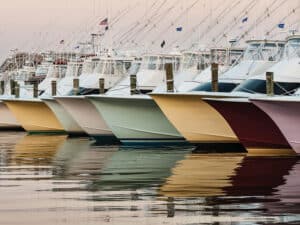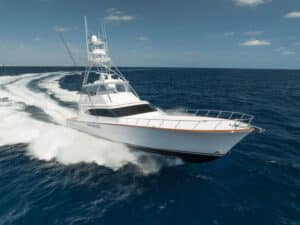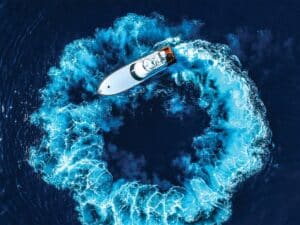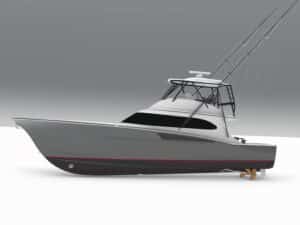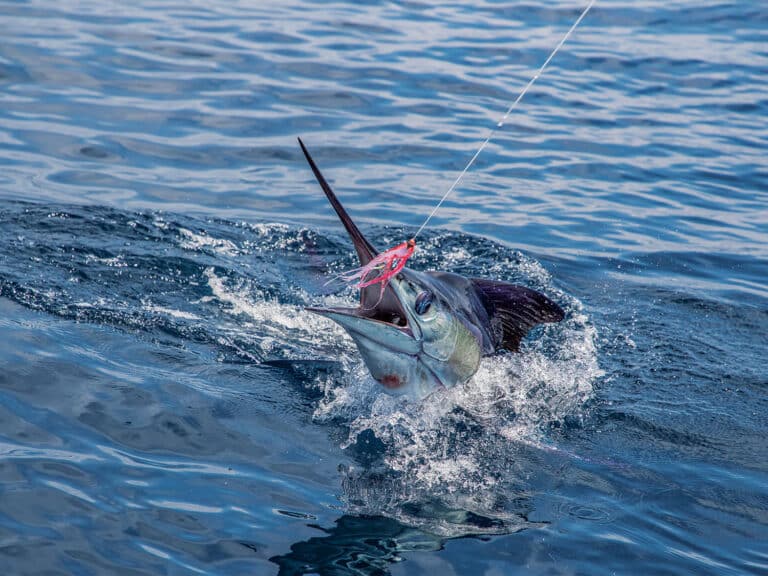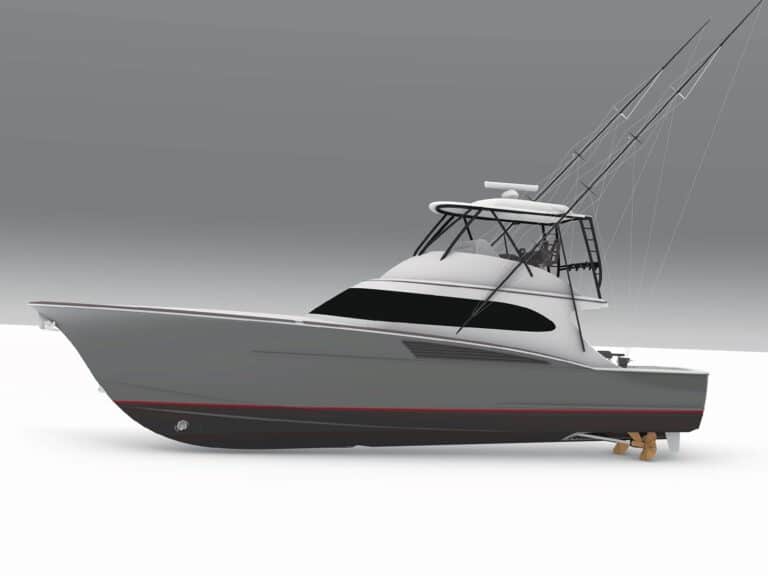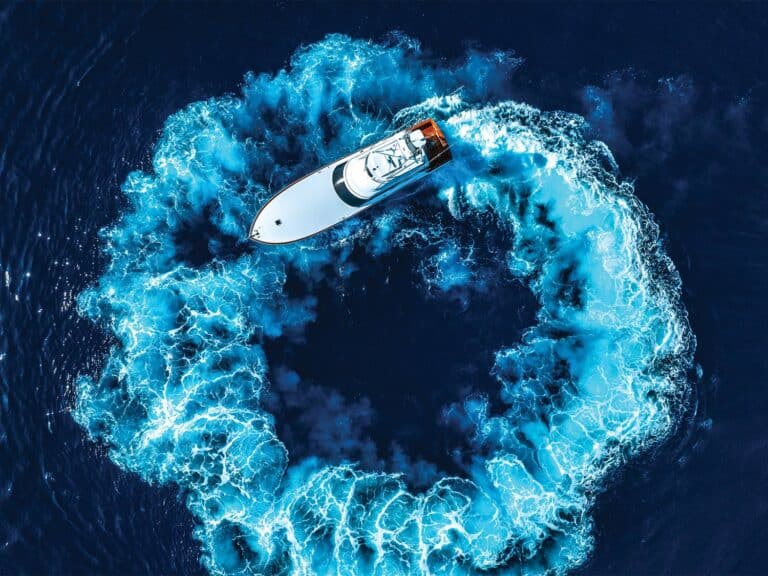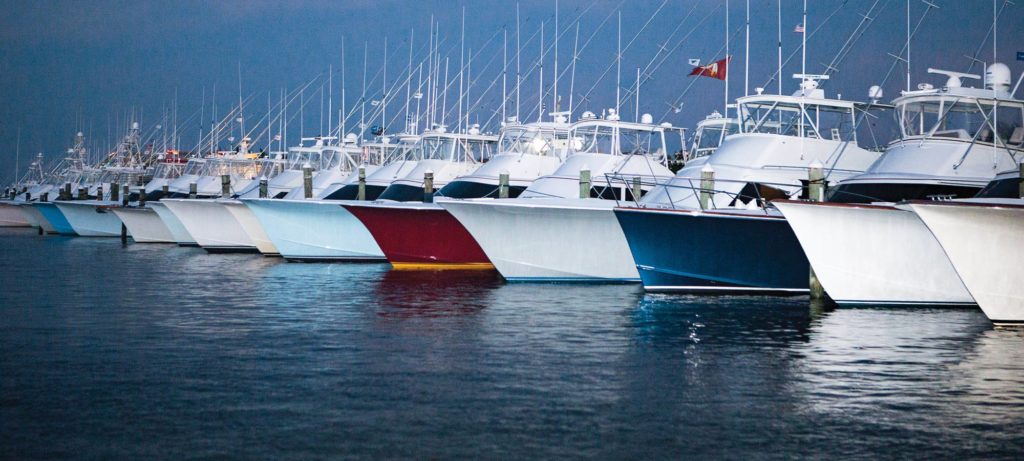
In the grand scheme of things, paint is really just makeup for boats. Alone, it’s not at all sexy; it looks like just another medium. But artfully applied on a perfectly faired canvas by hands that are schooled in precision, and it can turn any ordinary girl into an extraordinarily beautiful one. You might not be able to change her core personality, but you can bring out her inner beauty — and if she could talk, I’m sure she’d say thank you.
Over the years, yacht paints have changed at an exponential rate. Informed consumers demand high-quality products that will take the many hardships their vessel will face in its lifetime. In addition to simple substrate protection, paint needs to be durable, repairable and beautiful, with long-lasting protection. When you consider the time and cost involved in finishing a boat, the paint — hull, topside, engine room or otherwise — must be able to withstand the constant sanding of salt water, dropped wrenches and the sun’s pounding rays, at a minimum. It also needs to maintain its good looks for many years, while requiring as little maintenance and upkeep as possible.
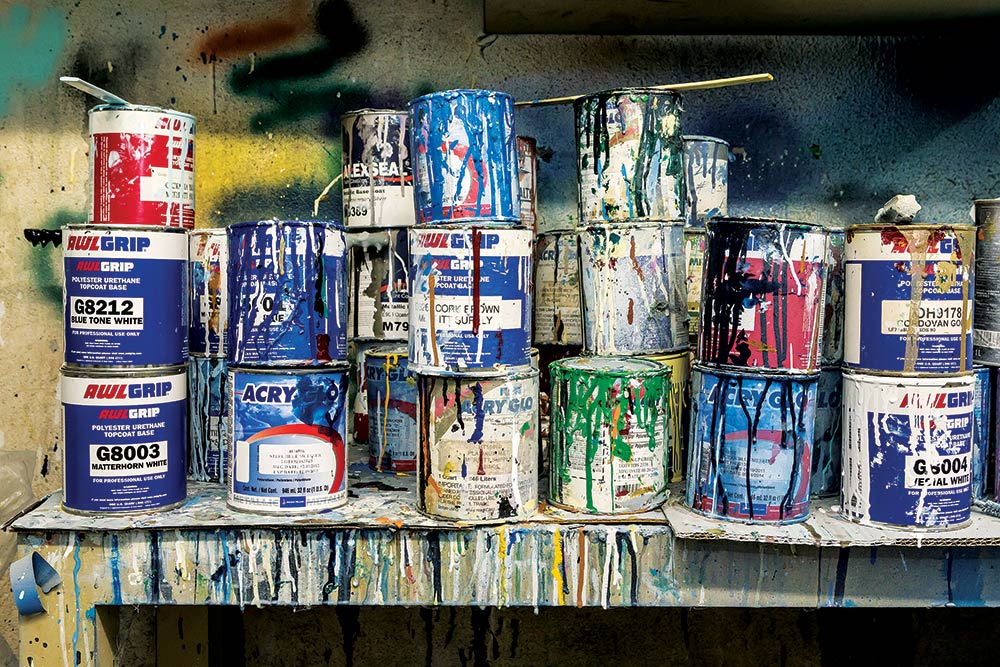
Above the Waterline
Paint manufacturers, builders and boatyards must constantly be on the lookout for the latest industry trends, as well as how to comply with environmental regulations that are being constantly thrown at them, in an industry where no company is immune to scrutiny. Paints, especially, have endured incredible challenges over the years. New technologies must be developed for the products to provide the desired result — whether in color, durability or efficiency — to remain in code environmentally and competitive in the field.
Alexseal Yacht Coatings is one product line used around the world to finish and refinish yachts above the waterline, offering a full-system range of corrosion-resistant epoxy primers, fairing compounds, high-build surfacers and finish primers that are meant to be used under its polyester polyurethane topcoats.
Alexseal provides systems that allow yachts, new or old, to be finished from the factory or refinished at the yard by not only being as environmentally friendly as possible but also by including solvents and additives that will perform beautifully under a variety of real-world conditions.
We work to develop products that will perform well in boatyard conditions, that are less dependent on controlled environments — especially where humidity is a factor.
Jeff Grandgenett, Sales Manager, Alexseal
Advertisement
Jeff Grandgenett, sales manager at Alexseal, says, “We work to develop products that will perform well in boatyard conditions, and that are less dependent on controlled environments — especially where humidity is a factor.” This is not to say that these types of coatings can be applied in any environmental conditions; however, paint technology has improved so greatly that it opens up the products’ ability to perform in a higher range of diverse conditions.
While the race is on to make industry paints and coatings that can be easily applied in what would be considered nonsterile environs, there is another race to make the application process itself faster and more streamlined. One of the boat owners I worked for as a professional captain most always concerned himself more with time than the bottom line. His main consideration was, “I don’t care about the how or the why — I just want to know when.” And in a time where every minute counts, eliminating downtime on a refit or completion of a new build is critical, especially to the boat owner.
AkzoNobel — a Dutch multinational company that includes such industry-leading brands as Interlux and Awlgrip — is always looking at different ways to streamline the application process. With so many different products in its lines, it might seem that one needs a chemistry degree to keep them straight. The company firmly believes that by working closely with its trade partners, it can ultimately suggest the best technology and equipment, from the type of sandpaper used for prep and finish work to the spray guns that transfer the product onto the vessel. Eliminating guesswork and unneeded extra steps is the best way to combat Father Time.
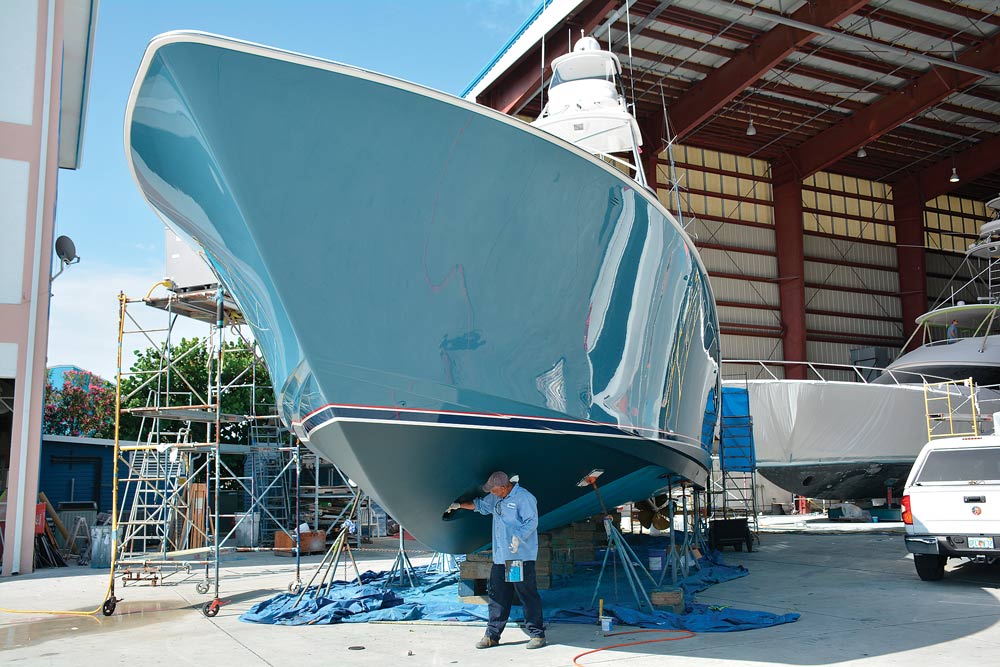
Train to Win
To reduce the likelihood of a rejected paint job, Awlgrip believes informing tradesmen about the use of its products will achieve the finest finish through perfect preparation and application in the safest way possible. Two Awlgrip training centers currently exist in the United States, the newest being a 2,500-square-foot facility in Cocoa Beach, Florida. Each center includes state-of-the-art application equipment — for theory and practical education — plus a classroom, breakout area and a large application booth for hands-on training.
“We teach the core steps and procedures at our training centers so the applicators learn the proper techniques and methods for painting and/or repairing primers and topcoats,” says Matthew Anzardo, marketing manager for Awlgrip and Interlux. With this specialized training, painters, foremen, project managers or any industry professional receive a clear understanding of which technique they need to use to get the results a savvy boat owner expects. Any professional who applies Awlgrip is recommended to undergo the training in order to get the best results. Should a special project be on the horizon or a trip to the training center not an option, the company will work with the facility remotely to ensure good results.
Promoting a product line 45 years in the making, Awlgrip initially utilized aerospace technology to advance its yacht products to what can be considered one of the premier topcoat products in the marine industry, with a worldwide customer base who are proud to say their boats have been Awlgripped (you must be doing something right if you have your own customer-devised tag line). However, it is a highly competitive industry, with scores of companies all looking to exploit the next big advance in technology or industry trend.
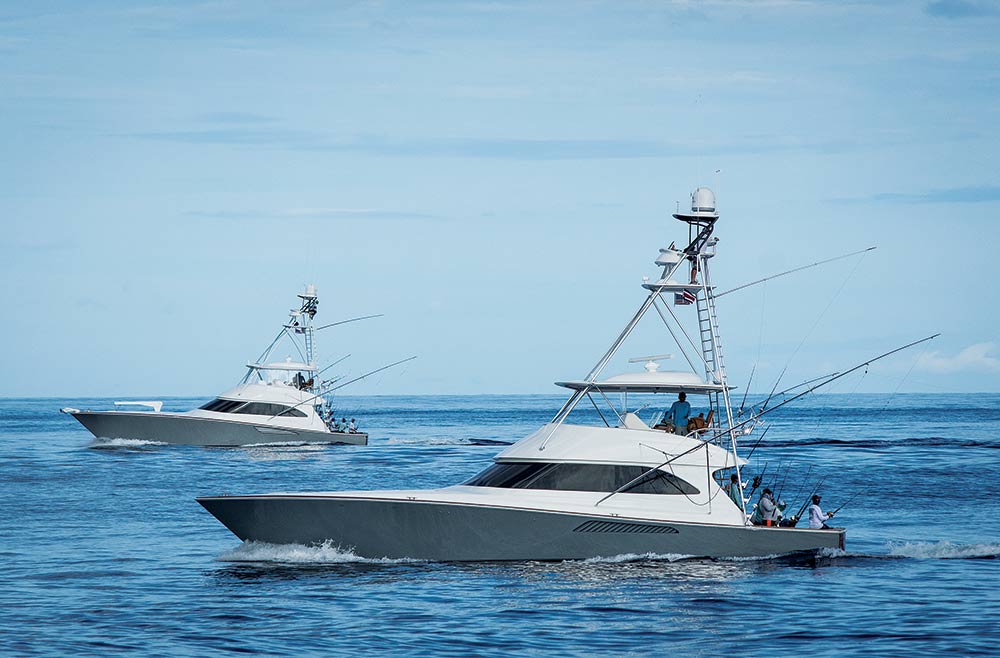
Below the Waterline
As long as humans have been exploring by sea, we have been locked in a constant battle with the wood-eating, fiberglass-clinging organisms that find any way possible to wreak havoc on our vessels.
Said to be discovered by the ancient sailors as an antifouling method, copper was authenticated in the 18th century, when it was used in thin sheets as a preventive layer against marine fouling. As the value of copper soared during the industrial revolution, mariners began using copper-infused paint as a way to deter marine-organism invasion, and the first hard-metal-infused bottom paint as we know it was born.
While copper continues to be the primary antifoulant used in the yacht industry, it is facing regulatory pressure in some states, such as California, where it is regulated with a maximum-allowed leach rate. Although copper is one of the lesser of the hazardous metals, all antifouling paints containing poisonous substances — known as biocides — must be registered and approved by the federal Environmental Protection Agency as well as the individual states. A push toward multiseason, low-biocide water-based products is on the rise.
Pettit Marine Paint, in Rockaway, New Jersey, is one company that continually pushes the environmental envelope by making changes to its paint technology. Its Hydrocoat line of products was a major development in ablative technology, replacing many of the harsh solvents found in most bottom paints with water. Hydrocoat is a true ablative paint: It slowly wears away with use, which eliminates buildup and marine growth by exposing fresh biocides as the old product sloughs off. But this is only one step, albeit a huge one, made toward advancing the bigger picture of below-the-waterline protection.
We are committed to developing products for the future that not only meet regulatory compliance but also exceed the performance expectations of our customers.
Matthew Anzardo, Marketing Manager, Awlgrip
“Ultimately, we are seeking to develop a biocide-free hull coating to provide protection against fouling,” says Pettit president John Ludgate. “And even though there are several nonstick-type products on the market to choose from, there is nothing in the biocide-free market that can satisfy the boating consumer’s high demand for excellent protection against fouling.”
Another way Pettit has kept up with technology is by making a jump toward the future with its Black Widow line of bottom paint. Used where speed is a high priority — racing, sailing and high-performance offshore powerboats — the Black Widow product provides a superslick, ultrasmooth buffable finish with powerful dual biocides, which provide multiseasonal protection in any waters. “It is easily brushed, rolled or sprayed on,” Ludgate says. “And it contains four strong slickening agents: molybdenum disulfide, PFTE, graphite and silicon.” Smooth is slick, and slick is fast.
The quest for bigger and better never ends, and today’s high-performance engines all but demand a clean bottom and running gear to operate efficiently. Boat speed can be the defining result of today’s high-tech engine performance, especially on initial sea trials and rebuilds. The industry must continue to find — or rather create — bottom paints that will allow us to maintain that half-knot of speed we can lose with conventional bottom coatings.
As time goes on, the many rules and regulations set by those entities who govern all things bad for us force the fast-paced sport-fishing industry, and those who serve it, to constantly find ways not only to keep up but to stay one step ahead of the constantly changing regulations, while also meeting the high demands of the consumer. It’s a tall order that requires considerable research and development to stay on the leading edge of emerging technology.
Volatile organic compound regulations guide paint and coating companies to constantly foretell the future: “We are always looking ahead to try and understand what future regulations will look like,” Anzardo says. “We are committed to developing products for the future that not only meet regulatory compliance but also exceed the performance expectations of our customers.” At the same time, Interlux is able to see what changes are coming in other industry segments and adjust its technology to conform as needed. “Our research team looks across many different industry platforms to develop the next generation of products,” he says.
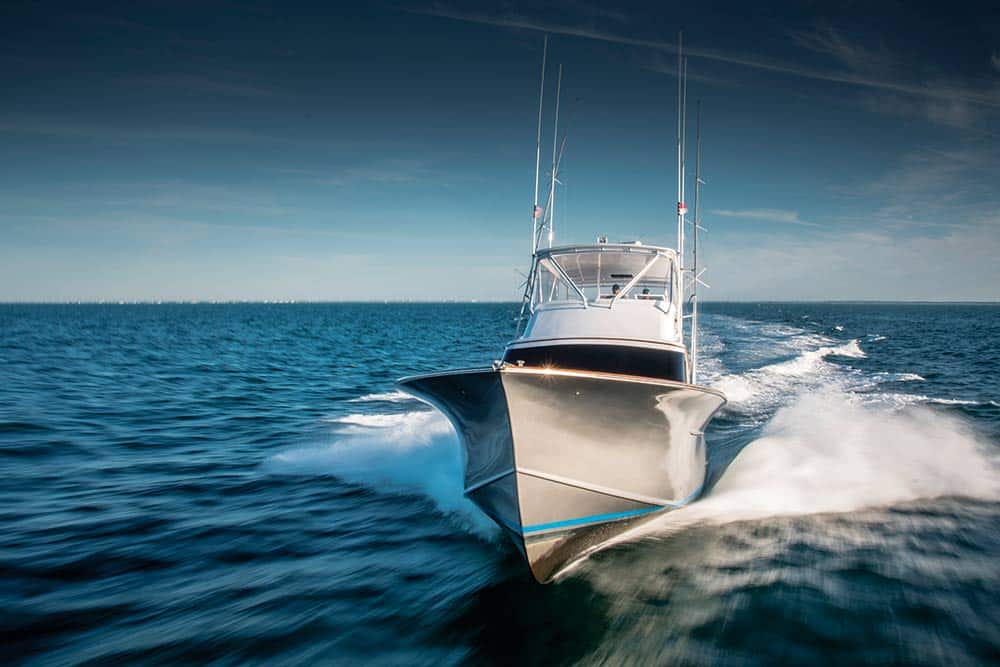
The Best Way to Predict the Future Is to Create It
Fifty shades of white are no longer the norm for boat hulls. Boat owners are trending toward paint colors that are fully customizable, looking to swathe their rides in colors to match their personality, or ones that are simply different from anything else on the water.
Although I’m still partial to the classic and oh-so-forgiving snow-white hull, trends in paint have been on a wild jet ride since the first sport-fish hull (that I remember) morphed from white to Fighting Lady Yellow in South Florida, and before that, Ernest Hemingway’s black-hulled Pilar, marlin fishing in Cuba and the Caribbean.
The boats of North Carolina’s Outer Banks own their share of the color palette, and there’s nothing prettier than the Crayola-clad charter fleet of Pirate’s Cove at dusk. But today it looks as if more boats are trending toward pearl and metallic hues in blues, grays, blacks and even shimmery silvers like those set on Ritchie Howell’s Sea Fix, or Feet First from Craig Blackwell. This industrywide, and at times, fashion-over-function, craze will continue to push the envelope as long as paint companies provide top-shelf results. The arms race to the next wild color isn’t slowing down any time soon, either.

Dominick LaCombe, president of American Custom Yachts, says he believes sport boats are headed for multicolor paint schemes, with one or two of the colors standing out. “It seems that the customers’ dreams are the new trends in paint schemes,” he says. “By digitally creating a personalized paint job, the customer can see what the end result will be, and then it’s the painter’s job to replicate it.”
Although the color itself might not be the applicator’s responsibility — be it builder or boatyard — it is the company’s responsibility to be sure the correct product is chosen for the job, because that does fall under its advisement to the vessel owner.
“We always consider how the boat is going to be used, and in which climate,” says LaCombe. “And since we have years of experience with all the high-end yacht finishes, we can confidently recommend the right product for a certain project.”
Mike Schenk, Bertram Yachts’ service-center manager, considers product quality, consistency and a customer’s long-term commitment to a particular color before choosing a particular paint. “Ninety-nine percent of our paint jobs are done with Awlcraft 2000 or Awlcraft SE, just because it can be touched up easily, eliminating the need to shoot large areas to blend,” he says.
While metallics and pearls might be more difficult to repair than traditional achromatic colors, the end result is an eye-catching display of futurism at its finest. The age of the paint and the repair location are definitely a factor on the repairability scale, but as long as the appropriate steps are taken and the applicators are familiar with the paint technology, blending solvents and products that are needed to properly and successfully repair, it can be done seamlessly.
“The yacht finish and refinish industry has definitely become more efficient, but it is still very labor intensive,” Grandgenett says. “A lot of creativity goes into finishing a yacht, and it truly is art in the pure sense.” And art, much like beauty, is always in the eye of the beholder.
Learn more about the Anatomy of a Modern Sport-Fisher
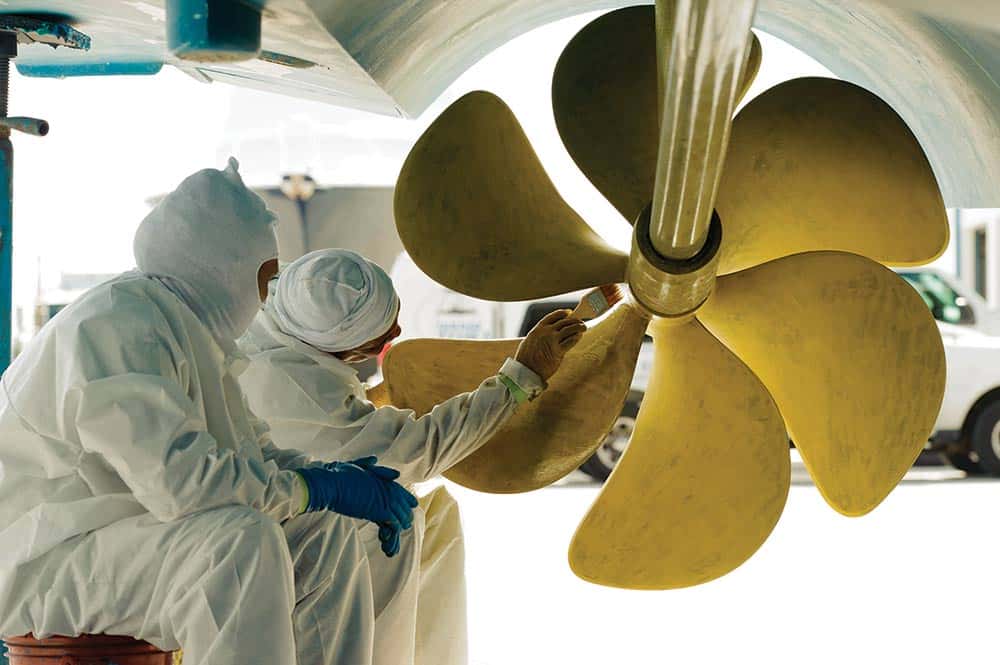
Running Gear Needs Love Too
Few things slow down a boat faster than a thick coating of barnacles and marine growth on the propellers, rudders and struts.
A product called Propspeed combats marine growth with a rubberlike coating that is easily wiped clean — not scraped or sanded like conventional bottom paint — which leaves the running gear as clean as the day it was applied. Propspeed can also reduce cavitation, which can eventually cause propellers to become out of balance and increase wear on the shafts and cutlass bearings.
Also applied to all metal bottom components, Mussel Buster Propeller Protection is an aquatic toxicity-compliant coating that significantly reduces fuel consumption and engine loads while all but eliminating electrolysis. By running the boat, in addition to diver maintenance, this ablative coating is formulated to keep the product working by bringing the organism-fighting ingredients to the surface of the coating. Similar to a ceramic in feel, Mussel Buster increases prop and engine revolutions per minute and improves cruising speed and fuel economy.
